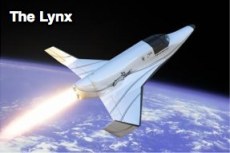Created by Canadian start-up Thalmic Labs, MYO may be a potential replacement to camera/movement tracking technologies. But what is MYO? MYO is an armband that detects gestures from muscle activity and motion sensing. The MYO armband uses Bluetooth connectivity to wirelessly pair with devices and send commands. Rechargeable lithium-ion batteries and an ARM processor, power the MYO armband. If the product lives up to expectations it could transform how we interact with digital technologies. Check out this video to see how MYO is expected to function:
Here are 5 reasons why I believe MYO could be a potential game changer:
1. It’s Non-Invasive
The MYO armband should be no different from wearing a watch (albeit higher on your arm). It’s not in front of your eyes, potentially getting in your way like Google’s Project Glass technology. My only concern regarding wear-ability is MYO’s “one size fits most” claim. I have thin arms, (a lucky problem to have in some instances) and can’t help but wonder if a MYO armband will fit looser and not function as well on my arm? Time will tell if Thalmic Labs may need to recreate the MYO armband in different sizes to guarantee optimal functionality.
2. Large Audience /Multi-Use Appeal
MYO can be used to interface with video games and for other entertainment purposes. It also has an educational application, enabling its user to sweep through PowerPoint presentations (without holding a remote or standing behind a computer) and circle data. In addition MYO can be used by runners and snowboarders for example to measure speed. MYO can also interact with devices to serve a mouse or remote type function. MYO’s large amount of uses, make this technology potentially accessible to a mass audience.
3. PC/MAC Compatibility
MYO will be fully compatible with PCs and MACs from launch, making it widely accessible. Thalmic Labs are also looking into offering Linux support.
4. It’s Affordable!
MYO is available for pre-order for $149 and can be shipped anywhere in the world for $10.
5. Open Source Development
Thalmic Labs have been smart enough to recognize that they will not be able to think of all the ways MYO could be used. As a result anyone can utilize MYO’s hardware to experiment, build and profit creating a MYO app.
My Recommendation
I think MYO could potentially be very successful. However, getting the armband into the mass market before an established technology company releases something similar (e.g. Google’s Project Glass), will impact Thalmic Labs’ success. I would recommend Thalmic Labs partner with a large technology company for example Microsoft’s Kinect to greater increase the likelihood of this technology having a fast impact. Educational partnerships with schools, colleges and technology centers could further ensure a successful launch.
Want to be an early adopter of this gesture technology? Click here to preorder a MYO armband.











